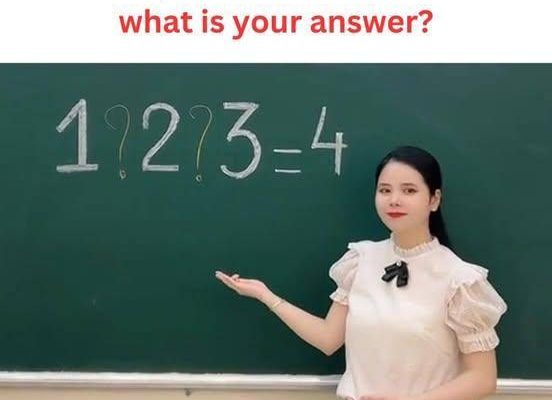
Mathematical puzzles have always been an exciting way to challenge our brains, sharpen our logical reasoning, and even entertain ourselves. Today, we have an intriguing equation for you:
At first glance, this puzzle may seem like just a bunch of numbers with no clear connection, but don’t be fooled! Your mission is to figure out which operations or symbols replace the question marks to make this equation valid. Sounds simple?
Why We Often Stumble on These Puzzles
Before diving into the solution, let’s talk about why puzzles like these can be tricky. Many of us approach equations with preconceived notions about how they “should” work. Here are some common pitfalls:
- Overlooking Unconventional Symbols
Most people assume the only operations allowed are addition, subtraction, multiplication, and division. However, puzzles often include less common operations like exponentiation or parentheses. - Focusing Too Much on the Obvious
We often get stuck trying the same basic operations repeatedly, ignoring the possibility of using creative mathematical methods. This can limit our thinking. - Missing the Fine Details
A small oversight—like forgetting the order of operations (PEMDAS/BODMAS)—can derail the solution entirely. Paying attention to detail is key.
Does any of this sound familiar? If so, don’t worry! Let’s break this puzzle down step by step.
Step-by-Step Guide to Solving the Puzzle
Now, let’s solve this puzzle together. Remember, the goal is to figure out which mathematical operations or symbols make the equation 1 ? 2 ? 3 = 4 correct.
Step 1: Analyze the Numbers and the Target Result
The numbers given are 1, 2, and 3. The target result is 4. Looking at the numbers, addition or multiplication might seem like the most obvious choices, but they alone won’t work here. For example:
- 1 + 2 + 3 = 6 (too high)
- 1 × 2 × 3 = 6 (still too high)
Clearly, we need to think beyond simple arithmetic.
Step 2: Consider Uncommon Operations
Let’s think about operations like exponents, roots, or parentheses. These can completely change the way the numbers interact. What if we squared one of the numbers? Squaring can drastically alter a number’s value while keeping the overall equation balanced.
Step 3: Test Potential Solutions
To make this equation valid, we can try combining exponentiation with addition. Let’s see how it works:
- Start with 1² (1 raised to the power of 2).
1² = 1 (since 1 × 1 = 1). - Add 3 to the result:
1 + 3 = 4.
It works! By introducing the exponentiation operator (²) and addition (+), the equation becomes valid. The corrected expression is:
1 ^ 2 + 3 = 4

The Importance of Logical Thinking
This puzzle reminds us that solving mathematical challenges requires creativity and attention to detail. It’s not just about following the rules—it’s about seeing possibilities you might not have considered at first glance. By thinking outside the box, you can uncover solutions that seemed impossible at first.
Share Your Thoughts and Challenge Others!
Now that you’ve solved the puzzle (or seen the solution), what did you think? Did you come up with the correct answer, or did you get stuck along the way? Share your answers and thoughts in the comments below!
Better yet, challenge your friends and family with this puzzle. See if they can figure it out as quickly as you did. Logical puzzles like these are a great way to exercise your brain and have some fun in the process.
Conclusion: Keep Your Mind Sharp with More Puzzles
If you enjoyed this puzzle, don’t stop here. Keep challenging yourself with more brainteasers and math problems. They’re a fantastic way to develop your logical thinking skills, enhance your problem-solving abilities, and stay mentally sharp. Remember, every puzzle you solve strengthens your brain’s ability to think critically and creatively. So, what are you waiting for? Dive into your next challenge today!



 BAD NEWS: Once again, Harry sheds tears on American television as he talks about his mother Diana’s accident: ‘I have found out who cut my mother’s seatbelt, and it turns out to be…’”
BAD NEWS: Once again, Harry sheds tears on American television as he talks about his mother Diana’s accident: ‘I have found out who cut my mother’s seatbelt, and it turns out to be…’” 
